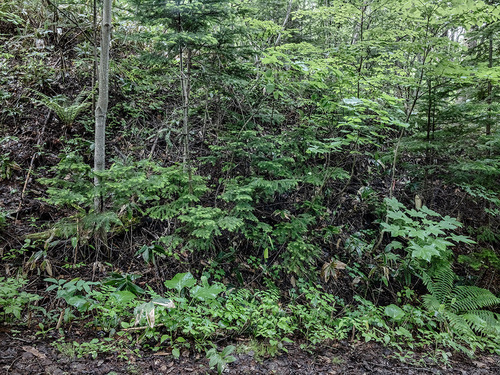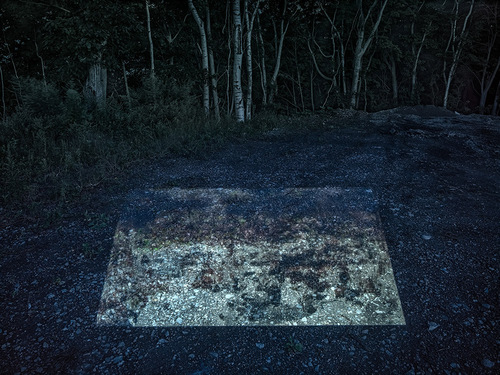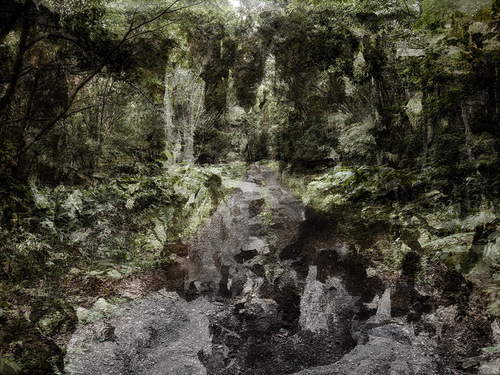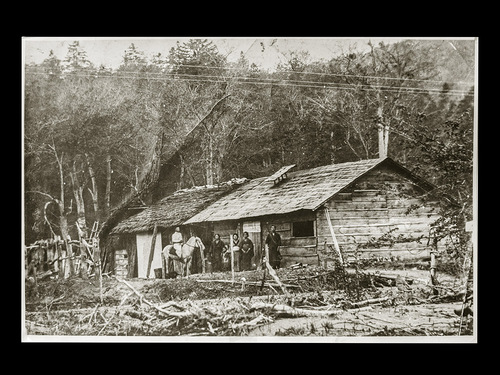Prisoners’ Road
Prisoners’ Road-囚人道路
About the project “Prisoner Road”
TThe “Prisoners’ Road” - Representing what can’t be seen
If you want to give photographic expression to something that has been buried in history, you need to represent it in some form. Representation is reproduction, that is, the process of re-expressing the original object. This project endeavours to visualise something that has become weathered and invisible, and to represent (reproduce) something that is essentially invisible, such as the concepts of gratitude and consolation, at a conscious level.
After the Meiji Revolution of 1868, Japan’s new government set out to open up Hokkaido, and as part of its plan, it was imperative to build a network of highways across its vast expanse. Some of them are said to have been constructed owing greatly to the bitter labour of prisoners jailed in Hokkaido. For example, in 1894, 230 prisoners among the 1,150 put to work on the 163 km section of the “Kitami Road,” from Abashiri to Kitami Pass, died. Today, only weathered traces of these “prisoners’ roads” remain in wooded areas all over Hokkaido. When we go there and try to follow their traces, we soon realise that it is not possible to visually identify the prisoners’ roads themselves. Therefore we need some kind of device to “show” the fact that they once existed.
The numbers (lines of latitude and longitude) indicating location in the photographs of the wooded areas exhibited here are attached as captions. These numbers are not there to explain something explicitly but to imply that something once existed there. Thus when people look at the photographs, they are forced to consider the meaning of what the photographer intended. The captions do not help them to appreciate the work. Confronted by a photograph that lacks any explanation, people do not end up simply looking at it but are led somewhere within the conscious realm. It may evoke memories of their past, reminding them, for example, of a once-travelled landscape, or of the hills and fields where they played as a child. These photos of wooded areas do not present any decisive moment or something visually beautiful to attract the viewer’s eye. They seem to be just ordinary photographs, without any climax. But what they do is allow viewers to project their own stories onto them and immerse themselves in them. Photographs whose content is straightforward are consumed easily in a short space of time. In this sense, I believe that these photographs of wooded areas possess a “strength” in themselves that allows them to stand on their own as works of art.
The soil remembers the history of those who lived there. Although indigenous people like the Ainu already occupied the land of Hokkaido, the policies of the Meiji government regarding its development led to the settlement there of large numbers of Japanese people from Honshu. These settlers saw themselves as “pioneers.” While the newly-constructed highways had been largely built by prisoners, their toil shared the same “pioneer” spirit. Thus, local people saw them, even though they were prisoners, as people who had shared their hardships and given up their lives to open up the land, and so felt grateful to them and wished to console their spirits. Monuments were later erected to remember the dead prisoners, but memories of the prisoners’ roads have faded over the years.
In the course of this project, I gathered information from people living along one such prisoners’ road and found that even to this day they continue to feel grateful and a need to console their spirits. And as I travelled along the road, I was also able to obtain a number of old photographs. These found photos were taken by ordinary people and unnamed photographers, so-called vernacular photographs: anonymous photographs about which we know nothing, not when, where, and by whom they were taken. In his Le Plaisir du Texte (The Pleasure of the Text), Roland Barthes insisted that “as an institution, the author is dead.” In other words, this signals the birth of the reader, who interprets the text in a variety of ways. The anonymity of found photography similarly allows for a variety of readings, which means the work is brought into existence by the viewer.
The prisoners’ roads are now weathered and cannot be identified by the naked eye, yet they certainly existed historically. Only a small number of old photographs from the time survive. Although they give us a small glimpse of the past, their veracity as to its representation is not necessarily guaranteed. As a photographer, I asked myself what I could do to project the facts of the past visually into the present, even though most exist now in terms of documented events. It should be possible to represent in some form the stories passed down through the generations by people living along the roads, as well as their feelings of gratitude and consolation towards the prisoners. Their memories and feelings were converted into images using image generation AI technology. By projecting these images onto the present-day landscape, I shifted the past into the present. In other words, the memories of the past have been transcribed on the soil of the present. I hope that by doing this, people will be able, by looking at images integrating the past and present, to relive the feelings of the prisoners’ road for themselves.
The works comprising “Prisoners’ Road” are divided into three sections.
The 13
Thirteen prison camps were set up along the 163 km prisoners’ road from Abashiri to Kitami Pass during its construction. Thirteen is an unlucky number and an apt metaphor for what went on here: it is a fact that many prisoners died in these places. The photographs of the wooded areas were taken where the prison camps were set up along the road. Each image was produced using Focus Stacking. As a result, every part of the image is in focus, a view impossible with the human eye. Also, because the captions provide information about each shooting location, viewers are asked how they see these commonplace photographs.
Anonymous
In this section, soil taken from along the prisoners’ road is combined with found photos from various locations. This was done using resin, into which the soil had been kneaded, as a substrate, for the photograph. The images of each found photo were then UV printed. They thus become a monument reflecting the feelings of gratitude and consolation held for the prisoners by residents along the prisoners’ road. Their anonymity allows the viewer to add new meaning to them.
Transition
Here, the AI-generated images are projected onto existing sites along the prisoners’ road and a new composite image taken. Voices from residents along the prisoners’ road who had been interviewed were used as prompts to generate the AI images. This image was projected onto the prisoners’ road using a projector and its surface was photographed. By this means, the images of the old prisoners’ road remaining in people’s memories transfers to the place as it exists today.



